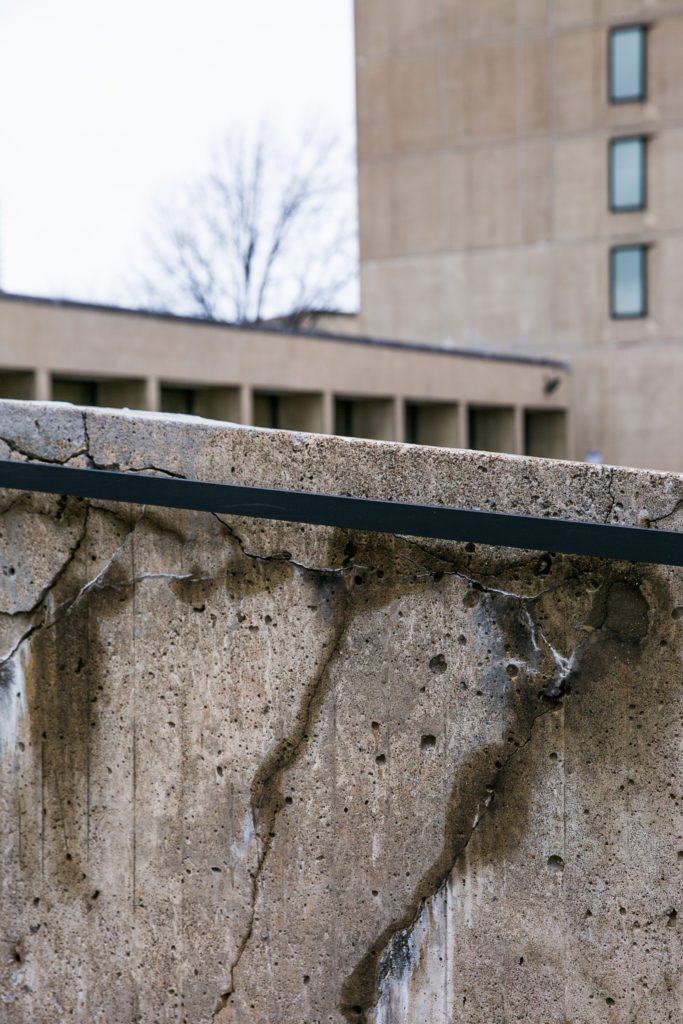
Corey Maher/Photo Editor
DAN ORZECHOWSKI
Assistant New Editor
Recently, Fredonia’s campus has seen some drastic changes to its building layout. More changes are expected to be seen in upcoming years.
In Fall of 2014, the brand new Science Center was erected. The $60 million project allowed the Biology Department to migrate from Jewett Hall and the Chemistry Department to move out of Houghton Hall. Now, under a temporary phase, the Departments of Physics and Geology and Environmental Sciences will be housed in Jewett Hall until Houghton Hall is renovated.
Director of Facilities Planning Markus Kessler explained that, together, a renovated Houghton Hall and the Science Center will establish the Science Complex. However, remodeling Houghton Hall was put on hold.
“We were actually ready to go out to bid for Houghton Hall, and then there was a budget issue,” said Kessler. “The budget and the money that was allocated was changed by the governor.”
According to Kessler, Gov. Cuomo’s budget prioritized the construction of New York roads and bridges, rather than student campuses.
“We’ve had a nice 15-year run, so I can understand that a little bit,” said Kessler.
Despite the pause from the budget, Kessler explained that remodeling will occur in phases. Phase one, which entails exterior and interior demolitions, is expected to be finalized in about a week.
Kessler came to work with Fredonia 17 years ago. Wielding a bachelor’s and master’s degree in architecture from the University of Buffalo, Kessler worked for several architecture firms, including Wendel and Clinton Brown Company, before his Fredonia arrival. Since then, Kessler has been a part of many campus accomplishments, one of them being the Science Center.
In 2014, the New York State Fire Prevention and Building Code Council voted to adopt an updated version of the Energy Conservation Construction Code. This code requires all buildings to meet certain energy efficiency standards. The Science Center received a gold rating, an impressive feat for a science building.
“We actually had to go back to school to be taught the new energy code so we have an understanding of what is required,” said Kessler. “Science buildings are very difficult [to reach gold ratings] with fume hoods and all sorts of equipment. So to get gold, I think it’s a big accomplishment.”
But the Science Complex isn’t the only item on Fredonia’s agenda. The campus, a hub for concrete structures, has been in a constant battle to maintain itself.
In 1968, Henry Cobb, in collaboration with I.M. Pei, designed Fredonia’s campus layout. Notable works of theirs include the John Hancock Tower in Boston and the Louvre Museum in Paris, France.
Back in the late ‘60s, Governor Nelson Rockefeller had a vision to redesign SUNY campuses. According to Kessler, Pei’s office received and continued to work with Fredonia’s master plan. Similar structures and complexes can be found at other public New York schools like the University of Buffalo.
Of Kessler’s 17 years at Fredonia, 15 of them have been partly spent on concrete restoration. Since concrete wicks and absorbs water, there’s easy potential for it to wear. This led to the recent removal of the Spine Bridge that connected the Williams Center to McEwen Hall.
“We actually replaced a concrete column because the concrete plates were so deteriorated that there was no concrete around it to hold up the bridge,” Kessler said.
Particularly on rainy days, students are quick to acknowledge the bridge’s removal. Matt Courtney, a junior political science major, said the bridge “blocked the rain, which was nice. But it was crumbling and leaking water.”
According to Kessler, many students didn’t know that the bridge was “rotting from the inside out.” Kessler offered that perhaps 20 years from now, with more state funding, Fredonia could see a Spine Bridge replacement.
Fredonia’s original master plan had significant differences compared to today’s layout.
Since the school was initially intended for 7,000 to 8,000 students, additional dorm buildings were included in the plan. Along with the these dorms, an observatory was to be placed near the wooded area near Ring Road.
Again, budget issues prevented the continuance of construction and these ideas were left behind.
